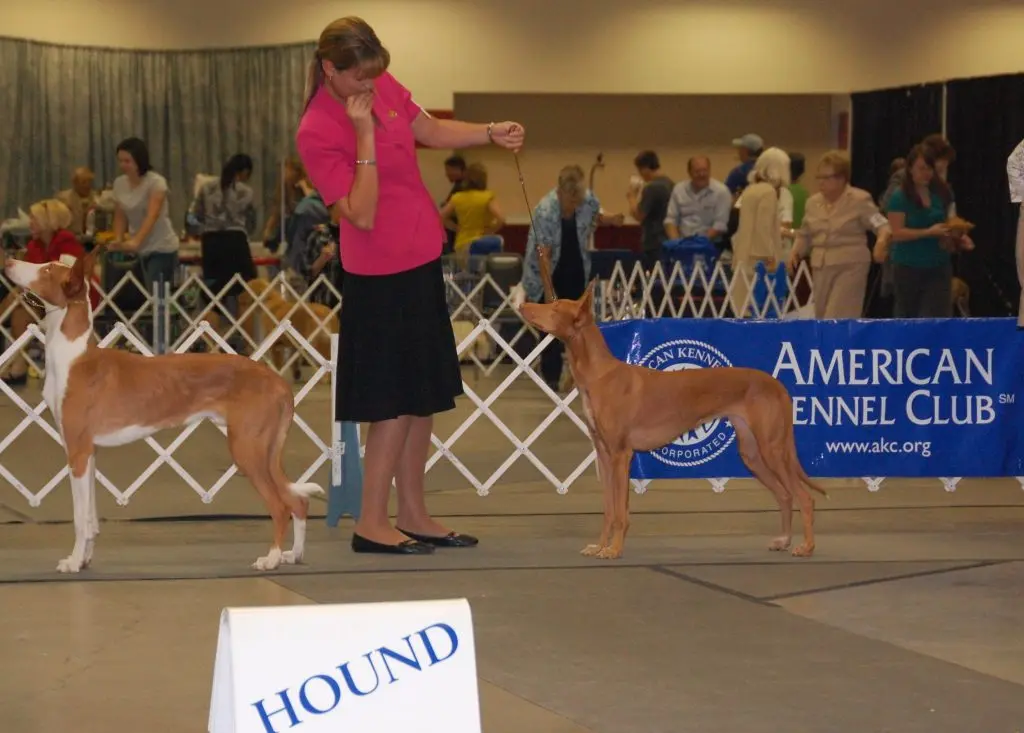Purebred dogs generally cost more than mixed breed dogs, but why is this? All dogs can offer their owners companionship and enjoyment, so what makes the price tag on a purebred dog higher than a dog of unknown origin? I would like to point out some of the potential reasons for this higher cost*.
Why purebred dogs cost so much really comes down to supply and demand. Many people like knowing what that cute puppy is going to look like as an adult – how big will it be, what type of coat will it have, and what personality traits it is more likely to have. Purebred dogs’ characteristics are predictable, and people like that. If people are willing to pay a high price for this predictability, breeders are likely to charge it.
There are many articles on the costs of raising puppies properly that explain the high prices for purebred dogs, but these costs are only justified when those breeders are raising their puppies responsibly. For the irresponsible breeder that just breeds the two dogs they own, without doing all of the extra things that a reputable “code of ethics” breeder does, there is no justification for an exorbitant price only for the predictability of appearance. I recommend that when searching for a purebred puppy, you should make certain that you are getting what you are paying for!
Table of Contents
What costs are involved with responsibly breeding a litter?
A breeder that is truly breeding to preserve the legacy of purebred dogs and improve health, temperament and appearance with each generation is usually not making a profit off of their puppies. If they are lucky, they may approach breaking even, but even that is unlikely. There are vast amounts of money that go into raising a litter of puppies, and those costs start long before the puppies are even born.
Many responsible breeders show their dogs in AKC conformation shows or other types of competition. Showing allows a qualified third party to evaluate if their dog(s) are close enough to the breed standard, set forth by the breed’s parent club, to warrant breeding. There are entry fees, travel expenses, and sometimes professional handler fees involved with showing a dog to his or her championship. Those expenses vary by dog and region, but many years ago, I was told the rough average of $10,000-15,000 to finish a championship on a dog.
I compared the career of two of my own dogs that I showed over the past 17 years. I was new to showing dogs, and my Rottweiler was my first show dog. It took 100 shows (and six years) to finish his championship. Entry fees usually range between $28-35 per show – so entry fees alone were approximately $3300! Those one hundred shows took place in 6 different states, and even the shows in my home state often involved travel to another city. I showed him myself most of the time, so I only spent about $400 total on handling fees.

By the time I got my next show dog, a Pharaoh Hound, I had improved my handling skills, so I never paid for a handler on her. She finished her championship in just 17 months and attended 29 shows throughout five states to earn that title – still close to $1000 in entry fees, not counting travel expenses. One of the least expensive championships I know of was on a client dog of mine – she traveled with me, and the owner paid handling fees, expenses, and entry fees for just nine shows. The total on that championship was only $2900, but that is certainly not the average!
While it is technically possible to complete a dog’s championship without travel and in just three shows, it is VERY unlikely. A safe average would probably be somewhere in the middle of those examples – so the $10,000-15,000 is likely an accurate estimate!
Once a breeder completes a championship on their bitch, they still need to do health testing to make sure she does not have any genetic issues that could be passed on to the puppies. Again, prices for these tests vary by breed and by region, but an average minimum is around $500.
The next step is to find a stud dog – and there are usually fees involved with that as well, which typically average what the price of one puppy would sell for. And, while sometimes the stud dog is nearby (which still involves blood tests for brucellosis on both the bitch and the stud dog), it will usually include either travel to get the dogs together, or testing and shipping of semen for artificial insemination. The average cost for artificial insemination, involving progesterone testing and insemination, is over $1000 per breeding.
Now, let’s assume the breeder got lucky and her bitch is pregnant! (I say lucky because many times they will go through all of the costs previously discussed and the breeding won’t take – which means no puppies to sell, yet lots of bills already accumulated!). There are some fees involved in the pregnancy (increased food for the bitch and usually an ultrasound or x-ray to confirm pregnancy), but they are minimal compared to everything else. Once the pups are born (there is a potential for some significant expenses there as well, especially if she needs a c-section!), costs involve food, vaccinations, tails & dewclaw removal (if that is done for that breed), toys, etc.
You can do the math, but I know for my litter of 4 puppies (one of which I kept), my income for selling the remaining 3 was $3600. My expenses for just that breeding alone (not including showing my bitch to her championship and beyond, putting performance titles on her, and health testing) were $1850. On paper, that looks like a decent profit of $1750 – but I had tried breeding her by artificial insemination two times before, which were unsuccessful, and each cost approximately $1000, putting me at a negative $250.

It is easy to see why reputable breeders charge a lot for their purebred puppies! They have a lot of money invested into those puppies!
However, it is not just money that a good breeder puts into their dogs. It is hours and hours of research (making sure the dogs they are breeding complement each other and will produce puppies that carry on the characteristics of the breed without health problems or bad temperaments) and even more hours of care. There is a lot of work that goes into raising a litter of puppies the right way. Good breeders will carefully socialize them to new people and environments, introduce them to crate training and housebreaking before sending the puppies to their new homes.
I should note that sometimes breeders consider the cost of a puppy to be a screening tool to determine if the home is appropriate. I feel this is a useful tool if used appropriately – if you can’t afford the upfront cost of a puppy, how will you manage any emergency vet bills that might arise? However, assuming that simply because someone has the money to pay a hefty price for a puppy, they will automatically make an ideal home is not always correct. If a breeder is charging a very high fee for their pups and not asking additional screening questions, that breeder may be only breeding for the profit!
Why are “rare” purebred puppies expensive?
The answer to this question depends on why the dog is “rare.” Truly rare breeds, such as Otterhounds and Dandie Dinmont Terriers, which are facing the danger of becoming extinct, do not usually carry a higher price tag than other well-bred dogs of more popular breeds. An Otterhound puppy will likely be in the $2500 range if you are able to find one.
Dogs that are marketed as “rare” are often considered rare because, according to the AKC standard, they have disqualifications (such as color or coat length). Yet these pups carry ridiculously high price tags – simply because people are willing to pay those prices!
Take, for example, the French Bulldog. An AKC registered French Bulldog puppy from a responsible breeder generally ranges in price from $3500-4500. These are puppies that come from parents that have achieved their AKC championships and been tested for the parent club recommended genetic health issues (hips, juvenile cataracts, patellas, cardiac issues, thyroiditis, and general eye problems). They come from breeders that actively show their breeding stock, socialize their puppies before sending them to their new homes, sell their puppies on contracts, and stand behind their puppies for their entire life. That might sound like a lot of money, but these responsible breeders rarely (if ever) break even with the amount of money they put into their dogs.

A “rare” French Bulldog puppy that carries a disqualifying fault according to the AKC standard (such as a long “fluffy” coat or an unusual color like lilac, merle, blue, etc.) are selling for $25,000-30,000! This enormous price difference exists only because people are willing to pay it! The dogs I own become priceless to me after I bring them into my home – but, in my opinion, NO puppy is worth a purchase price of $25,000-30,000. A breeder that is charging that much for a puppy is only breeding for profit.
There are NO benefits to the puppy with the disqualifying fault – in fact, there are often drawbacks to it, including increased health problems. For instance, French Bulldogs that are blue or lilac have an increased risk of developing alopecia due to their color dilution.
If you can find a breeder of an off-color French Bulldog that does all of the same things that I mentioned above (shows the rest of their breeding stock, health tests, socializes their puppy, guarantees health, and stands behind their puppies throughout their life), the price tag of $3500-4500 is warranted. However, I was unable to find any of the breeders of these “rare” colors that followed those reputable breeder practices.
It seems that the majority of breeders offering puppies with disqualifying faults for sale, only spoke of the puppies’ colors and the price they were asking for each puppy – I found no health guarantees, nor any accomplishments of the parents.
Why do some breeds cost more than other breeds?
There are certainly some breeds of dogs that are more expensive to own or more expensive to breed. Breeds that are prone to more health issues often end up costing their owners more money throughout their lives due to vet bills. Ironically, many of these breeds have higher priced puppies (such as French Bulldogs and English Bulldogs). Even from reputable breeders, some puppies cost more to produce.
Bulldogs are an example of an expensive dog to breed since they almost always require c-sections to deliver puppies. Many toy breeds tend to have smaller litters, such as Maltese, with an average litter size of just one to five puppies. A large portion of the expense of a litter does not change based on the number of puppies. ALL of the showing, health testing, and travel expenses are almost identical regardless of litter size. A small litter may save the breeder some on food expenses, but most everything else remains the same – except for having fewer puppies to sell to recoup those expenses! Understandably, breeders will often adjust the price of their puppies to recover the majority of the costs associated with breeding and raising the litter.
What about “cheap” purebred puppies?
A quick search of the classified ads in your local paper will usually result in several ads for purebred puppies available for much less than the prices I have mentioned. Just remember, in most cases, you get what you pay for! While you will probably get some predictability of appearance, it is unlikely that you will get the predictability of health and temperament.
As I mentioned before, it is expensive to raise a litter the right way! A litter of 8 puppies from a preservation breeder, sold for $2000 each brings in $16,000. However, the likely expenses for that breeding include $10,000 spent getting a championship on their bitch, $500 for health testing, $1000 for actual breeding expenses, $2000 for the stud fee, and then figure $1000 for food, vaccines, & registrations. That is a total of $14,500 in expenses and a profit of just $1,500 (which isn’t counting anything for time!).
The newspaper breeder that had the same litter of 8 and sold them for $600, likely only spent the $1000 for the food, vaccines and maybe registrations – for a profit of $3,800. Which breeder would you rather support?

It is possible to find well-bred puppies from reputable breeders for a lower price, but you must be patient and likely do some searching. If you have no interest in showing or breeding your puppy, be sure to ask the breeder if they offer a different price for a “pet quality” puppy. While many do not offer a discount for that (the same amount of work and expense goes into pet quality puppies as does show quality puppies), some do!
Another option to discuss and consider is that of a co-ownership. Each co-ownership is different, and the terms must be agreed upon by both parties. Co-owning is not for everyone, but sometimes a breeder will be willing to let a puppy go to a home for a reduced price if certain requirements are met. An example of this would be co-owning a puppy for a reduced price with the agreement that the breeder is able to use the dog for breeding in the future. There are many variations on co-ownerships, and both parties must agree on everything stated in the contract. If done properly, they can be very successful arrangements – but done improperly, they can often end friendships, or end up in a court battle.
Purebred puppies versus purebred adult dogs
Purebred puppies are almost always more expensive to purchase than mixed breed puppies. However, this does not necessarily hold true when comparing the cost of buying an adult purebred versus mixed breed dog. When you bring home a purebred puppy, you can predict basically what the pup will look like as an adult. It is much more challenging to know what a mixed breed puppy will grow into, but if you obtain that mixed breed as an adult, you already know the size and appearance.

If you think you want an adult purebred dog as a pet, you will likely spend much less than if you were to purchase a puppy of the same breed. Purebred dogs do occasionally end up in shelters, and they usually have the same adoption price as the mixed breed dogs. It may take more time to find a purebred adult dog up for adoption, though, because many breed parent clubs have rescues of their own where they pull dogs of their breed from the shelters and place them in foster homes until they can adopt them through their programs.
Reputable breeders will occasionally have adult dogs available as well! Many times these are dogs that are done with their show/breeding careers and ready to “retire” into a loving home. While there is often a fee for these retired dogs, it is usually much less than the price of a puppy.
Most adult purebred dogs are very comparable in price to adult mixed breed dogs, but there is one major exception to this – an adult dog that has proven itself in the show ring and is being sold with breeding rights. These dogs are not available often, as breeders generally want to keep their top winning dogs. Occasionally, one might become available, and the price tag on them can run upwards of $10,000.
Are purebred dogs worth the price?
The answer to this question depends on the reasons you have to get a dog. If you just want a buddy to walk with you in the park, appearance and size are not deal-breakers for you, and you can deal with any energy level, then probably not.
A mixed-breed puppy, with the right training, will most times turn out to be a great addition to a family! By the same token, a mixed breed adult dog from a shelter is a wonderful choice for many homes as well. On the other hand, if you need a dog of a particular size or are looking for a specific temperament or energy level, paying the extra price for the predictability of purebred is money well spent!
What SHOULD I pay for a purebred puppy?
If you have decided that you want a purebred dog, I recommend you spend your money wisely. As I previously explained, prices can vary a lot from breed to breed and as well as from breeder to breeder.
As a responsible preservation breeder myself, I beg you to please do your research! If you do choose to purchase a puppy, please make sure you are getting what you pay for! I believe there is a vast difference between paying for a healthy, well-bred dog that comes with a lifetime of support from its breeder and paying more than $10,000 for a puppy from an unscrupulous breeder that is taking advantage of a color fad or a surge in a particular breed’s popularity.
If the benefits of purchasing a purebred puppy from a reputable breeder are not worth the price tag attached (which will most likely range somewhere between $1000-4000), please consider a purebred rescue dog or a puppy or adult dog from a shelter – they need good homes as well!
*The author resides in The United States of America; therefore, the information in this article is based on showing and breeding dogs in the USA.




